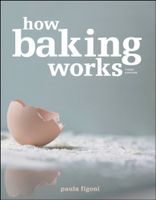Advertisement
Aerating
Appears in
By Paula Figoni
Published 2003
Eggs are unique because they are especially good at aerating, producing a relatively stable foam. Foams consist of tiny bubbles of air or another gas surrounded by a liquid or solid film. By aerating, eggs assist in the leavening process. The actual leavener is air. Eggs simply form the foam that allows air to be incorporated into baked goods. Examples of baked goods that rely heavily on the foaming ability of eggs for leavening include sponge, genoise, chiffon, and angel food cakes.
The foaming power of eggs refers to how high they can be whipped. Egg whites, which have a very high foaming power, can whip up to eight times their volume. However, whites whipped this high have extremely thin cell walls consisting of overstretched protein films. When placed in a hot oven, these protein films stretch even more and are likely to break and collapse. There are ways to prevent the overwhipping of eggs and egg whites so that baked goods don’t collapse in the oven. These are discussed later in this chapter.


